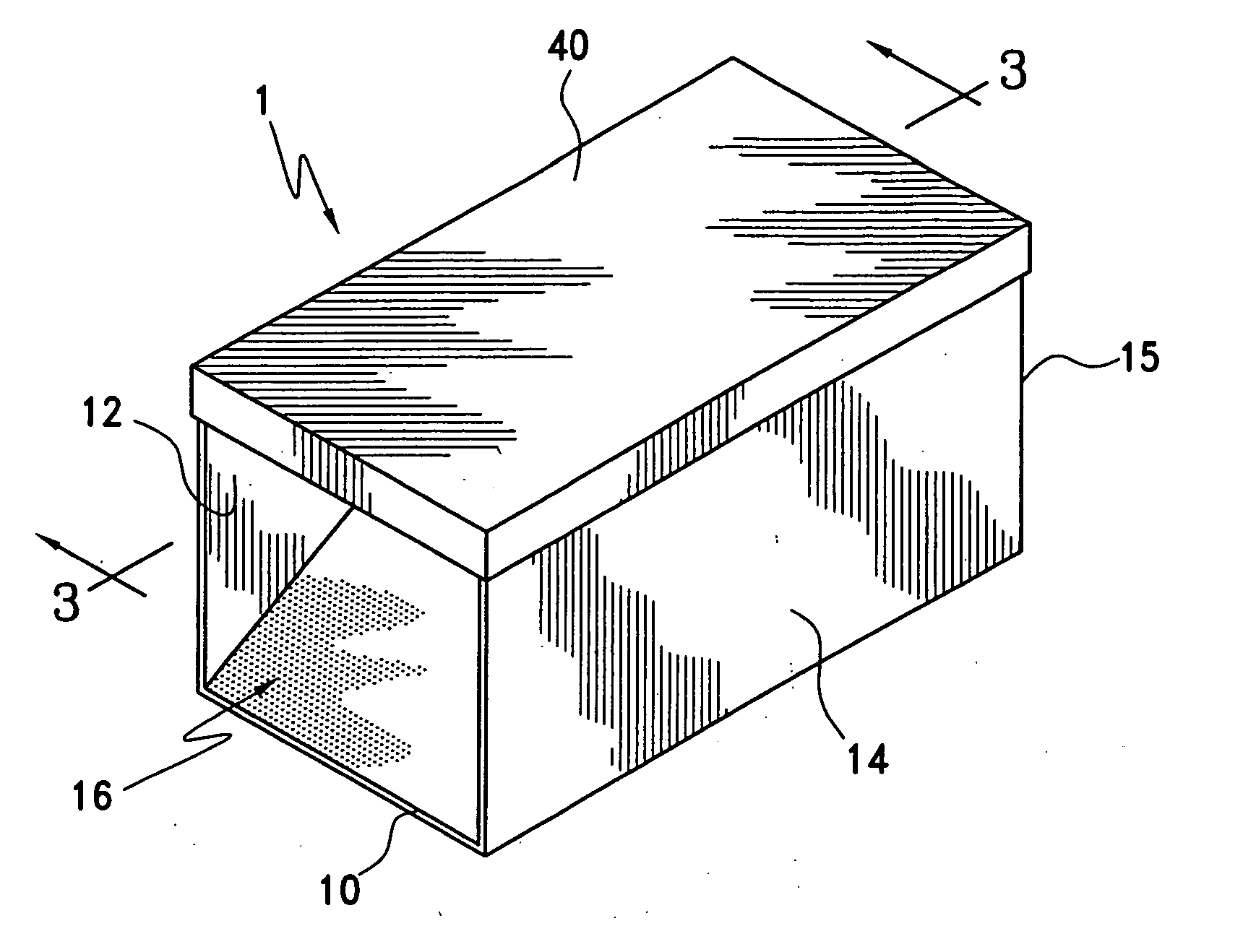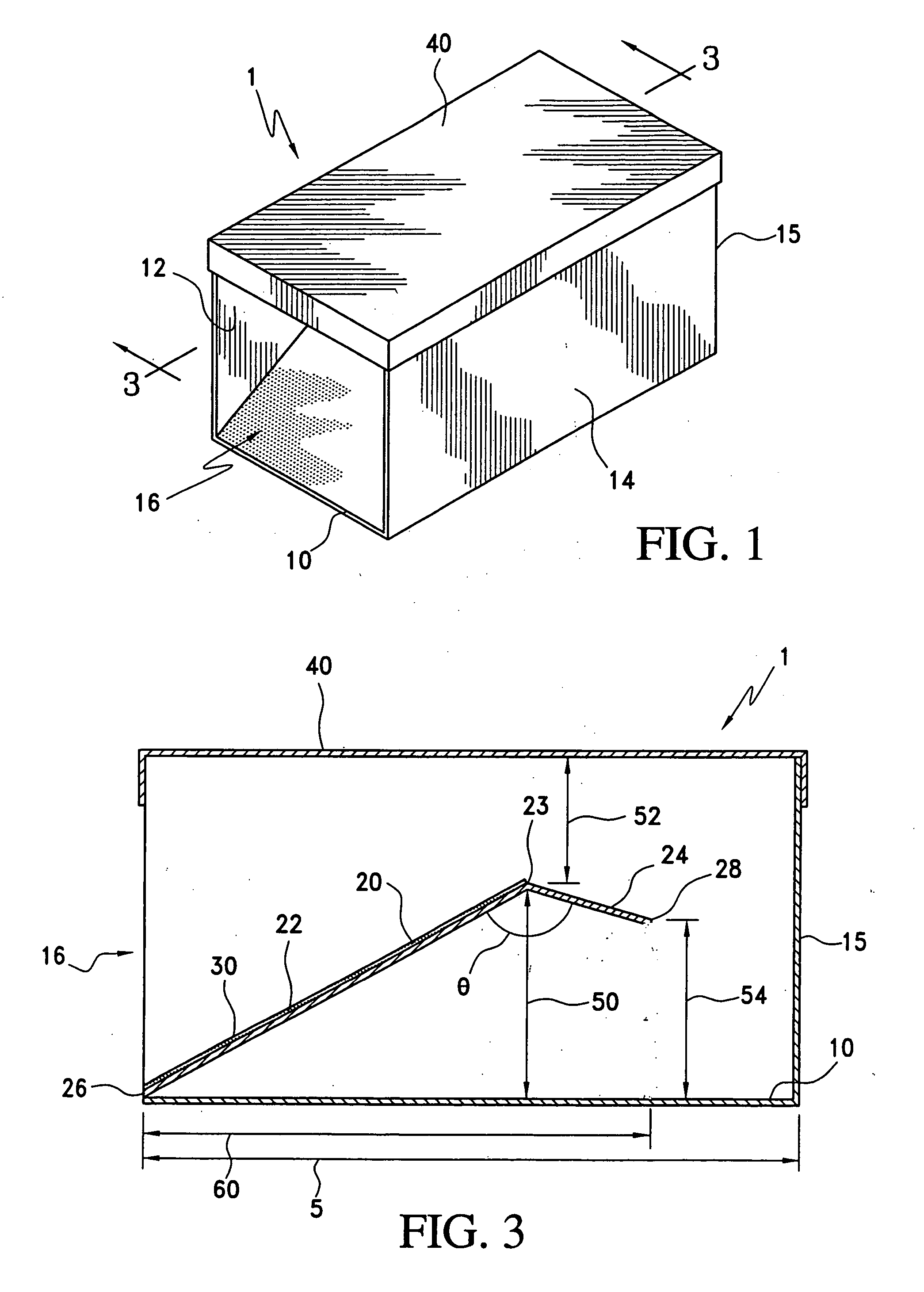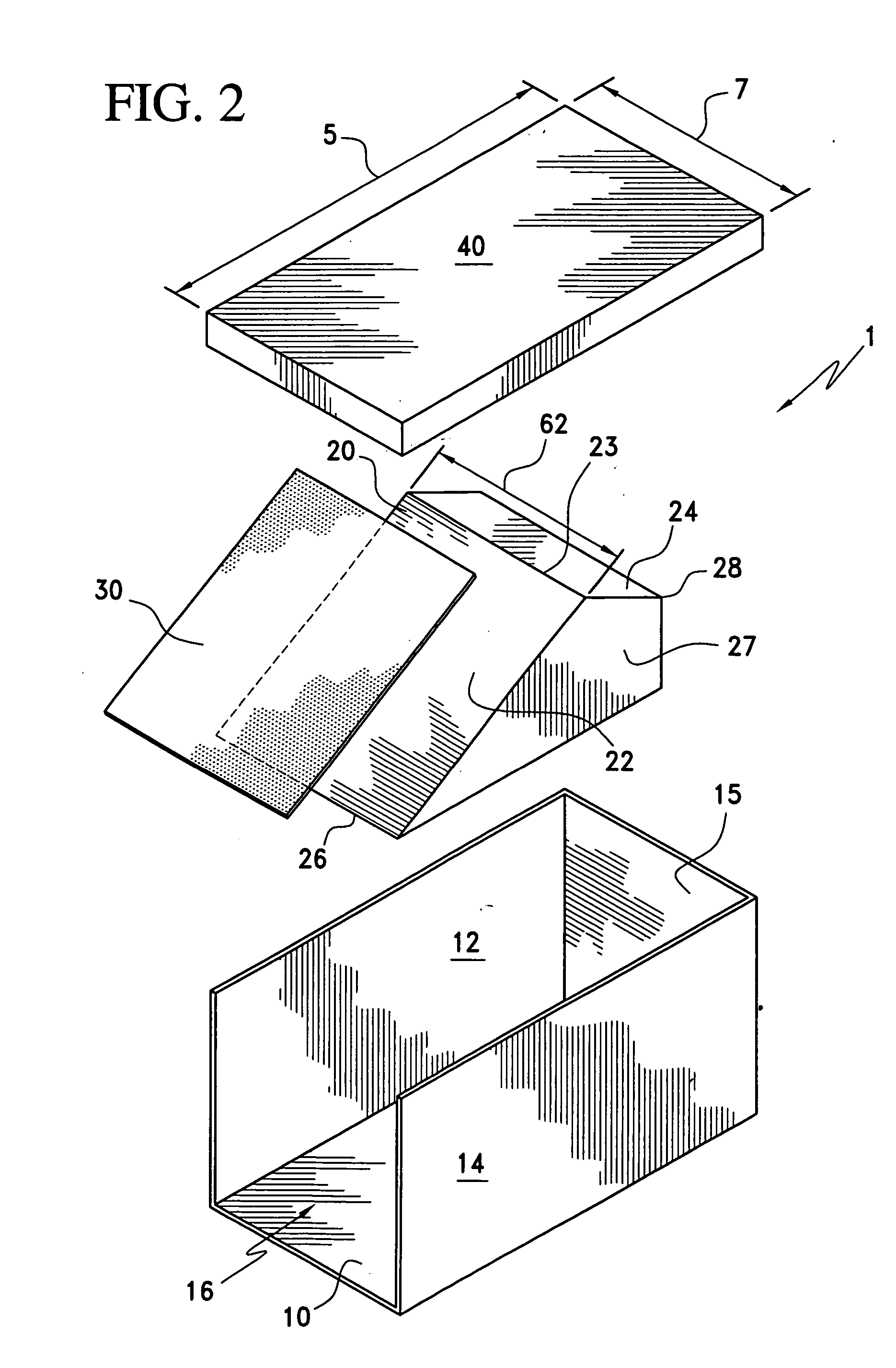Trap for crawling insects
- Summary
- Abstract
- Description
- Claims
- Application Information
AI Technical Summary
Benefits of technology
Problems solved by technology
Method used
Image
Examples
Embodiment Construction
[0019] Referring now to the Figures, a trap 1 for capturing crawling insects of the present invention is shown in the form of an open-ended rectangular box having an open front end 16 and being defined by a bottom wall 10, a pair of sidewalls 12, 14 and a rear wall 15 opposite the open front end. Both the sidewalls and the rear wall are integral in construction with the bottom wall, thereby forming the basic frame of a box to which a top 40 is removably attached. Each of the sidewalls 12 and 14 has a length 5 and a width 7 which correspond to the length and width of the top 40.
[0020] As best seen in the exploded view of FIG. 2, a ramp 20 is disposed within the box. The ramp 20 is bent to demarcate a rising domain 22 and a declining domain 24 integrally joined to one another at a bend 23. The rising domain begins at a front edge 26, positioned at the open front end 16, and rises within the trap to a first height 50 leaving a first clearance 52 measured from the top 40 at the bend 23...
PUM
 Login to View More
Login to View More Abstract
Description
Claims
Application Information
 Login to View More
Login to View More - R&D
- Intellectual Property
- Life Sciences
- Materials
- Tech Scout
- Unparalleled Data Quality
- Higher Quality Content
- 60% Fewer Hallucinations
Browse by: Latest US Patents, China's latest patents, Technical Efficacy Thesaurus, Application Domain, Technology Topic, Popular Technical Reports.
© 2025 PatSnap. All rights reserved.Legal|Privacy policy|Modern Slavery Act Transparency Statement|Sitemap|About US| Contact US: help@patsnap.com



